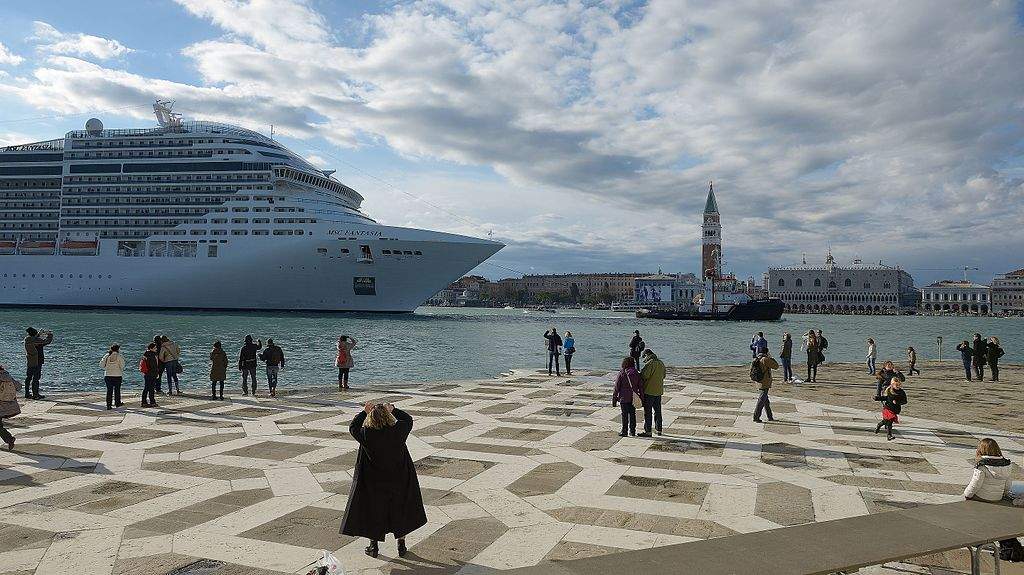Venice, the stop to big ships is law. But it will be some time before it happens
With 370 votes in favor, 16 against, and 29 abstentions, the Chamber of Deputies yesterday approved the bill to convert Decree Law No. 45 of April 1, 2021, on “urgent measures on transport and for the regulation of cruise traffic and maritime transport of goods in the Venice lagoon” into law: this is the decree by which the government imposed a stop to large ships in the San Marco basin in Venice. The decree requires the North Adriatic Sea Port System Authority, which is also responsible for the Venice lagoon, to launch a “competition of ideas” within 60 days to develop proposals for docking points outside the lagoon.
The problem, however, is that for the time being ships will continue to arrive at Venice’s Maritime Station, and will still transit through St. Mark’s Basin to do so. Before the new landings are identified, in fact, the ships would have to dock in the port of Marghera: however, this is a commercial port, where merchant ships also arrive, and, as reported in the local press, the port of Marghera does not allow compliance with current sanitary protocols (and, even if it did, the landing points are not ready anyway and it would take a long time to prepare them). Thus a paradox is created: the law requires a stop to the passage of ships from San Marco, but in fact they will continue to pass through San Marco, with no definite timeframe on new docking points. Two plans are currently being studied: one involving docking at the Lido inlet and transporting passengers to the Maritime Station by environmentally friendly means, the other involving a terminal also at the Lido inlet connected to the Mose artificial island.
And while waiting for the new docking points to take shape, the most feasible (and most pleasing to the government) hypothesis seems to be the construction of a temporary terminal in Marghera (which, however, would not be ready before a year): the port authority has already called for tenders for the feasibility project. In this case ships, entering from the mouth of Malamocco, would travel through the Oil Channel to get to the terminal. However, the problem, notes the No Grandi Navi Committee, is that the Canale dei Petroli (as well as the Canale Vittorio Emanuele II, which could be used for less bulky ship traffic) needs excavation to be adapted to cruise traffic. “And new excavations,” the Committee explains in a note, “are incompatible with the hydrogeological and morphological balance of the Lagoon, which has already been tampered with in recent decades.”
For June 5, the day on which the first cruise ship after the Covid emergency (the MSC Orchestra) will return to Venice, the Committee has already called for a demonstration at the Zattere to demand that large ships be effectively kept out of the lagoon, and definite timeframes for the implementation of the projects.
Photo: cruise ship in the San Marco basin. Photo by Wolfgang Moroder
 |
| Venice, the stop to big ships is law. But it will be some time before it happens |
Warning: the translation into English of the original Italian article was created using automatic tools. We undertake to review all articles, but we do not guarantee the total absence of inaccuracies in the translation due to the program. You can find the original by clicking on the ITA button. If you find any mistake,please contact us.




























